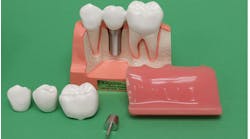Author’s note: Levin Group has reviewed and prioritized hundreds of strategies to increase practice production. Each month, we highlight a powerful idea ranked in order of priority.
Scheduling is one of the most powerful factors in increasing practice production. In most businesses, the time management system controls all other systems. This means that if you get scheduling right, production will increase. However, practices must keep in mind that scheduling is about far more than where you put patients. There is a powerful rationale behind many of the protocols for scheduling, and one of those is to try to start big cases within seven to 10 days. It’s simple:
- The sooner you start a large case, the faster new production will occur in the practice. This protocol, over time, will significantly increase practice production.
- The longer it takes to start a large case, the higher the chance that the patient will back out. We have observed through several recessions that this is even more true when the economy is in a downturn, as more people start worrying about spending money and sometimes develop a wait-and-see attitude that leads to canceled appointments.
- A week makes a difference. We find that after one week, the percentage of patients who cancel large cases begins to increase as they either change their mind, rethink their decision, or encounter interference from other life factors.
These three factors clearly indicate that scheduling large cases as soon as possible is in the best interest of the practice and, from a clinical point of view, the patients. Unfortunately, we see many practices with schedules full of smaller appointments. Larger cases get put off for three weeks or longer. This has a direct effect on the number of patients who will decide not to follow through with treatment, which will affect overall practice production.
One way to approach solving the scheduling system is to block time for larger cases in advance. If the blocked time is not filled in several days ahead, then the practice can begin scheduling patients in that time block. If the blocked time is regularly not filled in, the practice needs to examine overall diagnosis of ideal treatment and case presentation and acceptance. Practices can evaluate how many blocks they need to start large cases and place them throughout the schedule to ensure that a larger case can be accommodated in seven to 10 days. This will have a positive effect on patient satisfaction, as patients will maintain their motivation to complete treatment and look forward to excellent results.
Keep in mind that you must train front desk staff and scheduling coordinators to schedule larger cases within seven to 10 days. Otherwise, they will simply engage in the normal activity of looking for a long enough appointment block, even if it’s several weeks away.
More from Dr. Levin:
- Profit down, overhead up (a lot): Findings from the 2022 Dental Economics/Levin Group Annual Practice Survey
- Practice production, prioritized: Hiring a sterilization assistant
- A strategic way to raise your fees
Furthermore, scheduling systems should be fully revised every three to five years. This may sound overwhelming, but the scheduling system that allows you to grow using analytical and motivational principles can become the same system that keeps you from growing in the future. By analyzing the schedule regularly and understanding patient psychological and motivational factors, practices can continue to increase production with patient flow that is comfortable and enjoyable.
Remember, the sure way to know that it’s time to analyze the schedule and develop new time blocks is if you can't get your larger cases scheduled within seven to 10 days.
Editor's note: This article appeared in the June 2023 print edition of Dental Economics magazine. Dentists in North America are eligible for a complimentary print subscription. Sign up here.






